Can You Use A Doubler Lens On A Dslr Camera
A skilful friend of mine recently came to me with some questions about lenses. She's a professional action sports photographer and was seeking advice on the best style to accomplish most 400mm in a lens bundle that was still relatively lightweight and portable. I've shot many of the same subjects she was talking about, so I immediately recommended using a 300mm f/2.8 with a 1.4x extender.
Her response surprised me:
"I've never had much luck with sharpness with extenders"
I know this is a feeling that a few people accept, and all the same I also know many people who rely on them for their work and wouldn't leave the house without them (myself included). Why is in that location such a dandy divide?
This seems similar a perfect opportunity to dig a chip deeper, bosom a few 'extender myths' and testify you lot guys how and when best to use them. In that location'southward definitely a few do'due south and don'ts when it comes to extenders and unfortunately the internet forums are awash with people who swear they know meliorate, even though they've never actually used the things. I retrieve a lot of the bad printing that extenders get is based off erstwhile lens pairings and erstwhile engineering science, with people re-hashing the same "well Dave said…." stories from many years ago. Permit's set this directly, starting from the kickoff…….
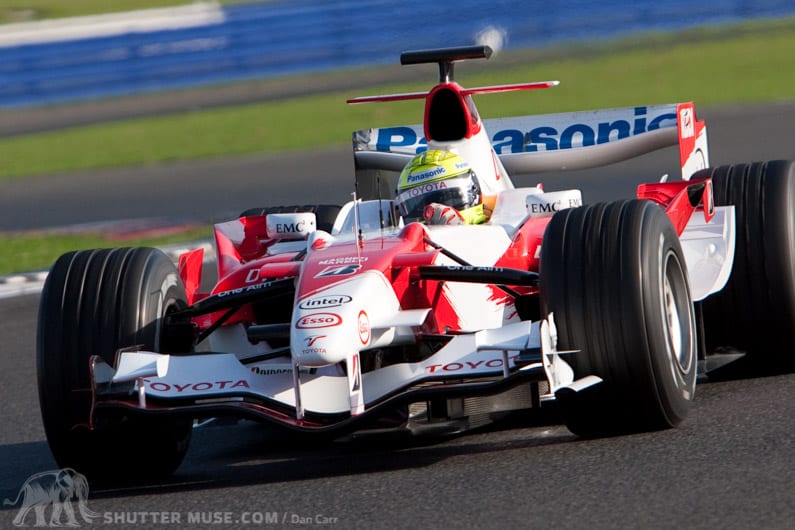
What Are Extenders?
Extenders, as well often called teleconverters, are optical accessories that attach to the rear end of a lens to increase the focal length. The 2 most mutual varieties are 1.4x and 2x extenders, though Nikon also makes a one.7x version as well. As you lot've probably guessed, the number represents the factor by which the focal length gets multiplied. A seventy-200mm lens with a 2x extender becomes a 140-400mm lens for example.
There's no such thing as a free lunch though! Using an extender volition reduce the maximum discontinuity of your lens. A ane.4x extender volition cause your maximum aperture to be reduced past one stop and a 2x extender will cause a two-stop decrease. Nikon'southward unique one.7x extender slots in the middle with a one and a half stop subtract.

Example:
- A 300mm f/2.8 lens with a 1.4x extender would get a 420mm f/four lens
- A 300mm f/ii.8 lens with a 2x extender would go a 600mm f/5.6 lens
You might want to refer to our f-stop reference chart which will aid y'all visualize the various f-stop changes on your lenses, or check out the table below for some common lens examples.
NB: Not all lenses are compatible with extenders. You should always refer to the lens specifications on the manufacturers website before purchasing ane. In full general, all telephoto prime lenses will be compatible, as will tilt-shift lenses and sometimes macro lenses. Wide-angle lenses are non compatible with extenders, not considering you shouldn't apply them, simply because y'all physically can't use them due to the rear chemical element pattern of wide-angle lenses. You'll notice from the photos of the actual extenders, that in that location is a protruding chemical element that sticks into the back of the lens barrel. Some lenses, wide-angles in particular, have a rear lens chemical element that'southward as well close to the lens mount to allow the extender'due south protruding element to fit into the lens.

Advantages Of Using An Extender
The obvious answer to this is that information technology gives you a longer focal length, but the Real answer to this is that it gives you a longer focal length at a lesser cost and weight! Long lenses are inherently big and expensive and so using an extender can be a great manner to get extra reach from your lens without breaking the bank or your back. To return chop-chop to the conversation with my friend that started all of this, I recommended she used a 300mm with a i.4x extender because that combination weights most half what a 400mm f/two.8 prime number lens does. In her specific situation, weight was a big factor every bit she had to carry the lens all mean solar day whilst skiing.
The second reason you might want to consider an extender is for the added versatility when used with larger prime lenses. Big primes, like a 300mm or a 500mm are wonderful for their purpose, but you can be limited in the type of shots you lot can get if y'all are non able to reposition yourself. Take shooting from a safari vehicle for an example. You spend all day tracking an animal and and then when you find it, the vehicle parks up and so you can discover. With a prime lens you are really left with only a couple of possible composition options and a vertical and horizontal shot. Using an extender will double the number of potential different shots you tin get if yous are stuck shooting from ane spot! That's important if you are shooting for an editorial or stock customer considering more than layout options are ever welcomed. If yous are shooting field sports like football game then you can also go added attain when the play moves to the opposite end. This is distinct from using a longer lens in the first place because once play moves back to your end once again, you desire the option to 'zoom out', by removing the extender. Obviously not something you can do with all sports, since y'all don't want to exist trying to alter things in play, but for sporadic activity similar football it can work.
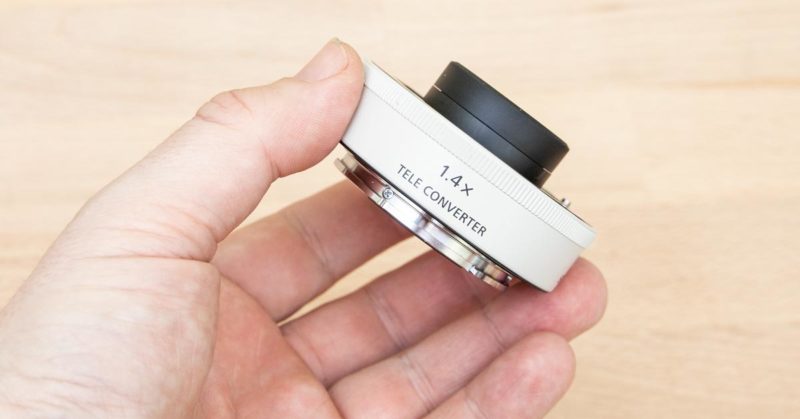
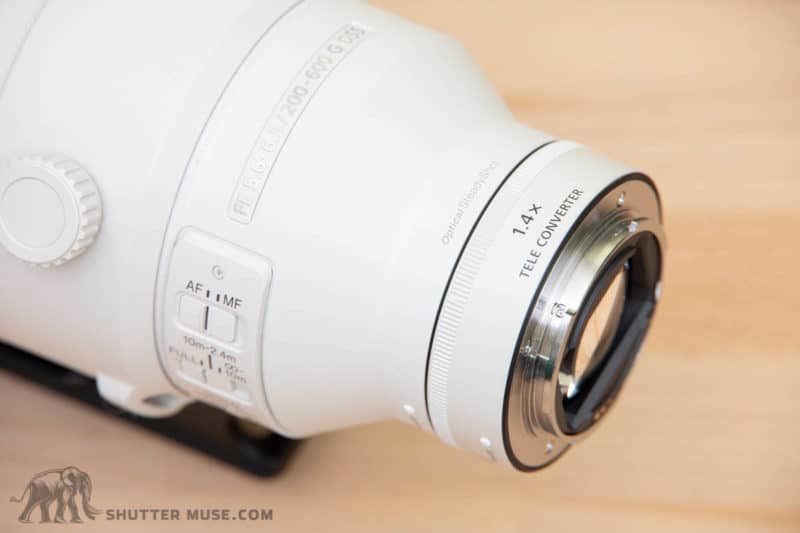
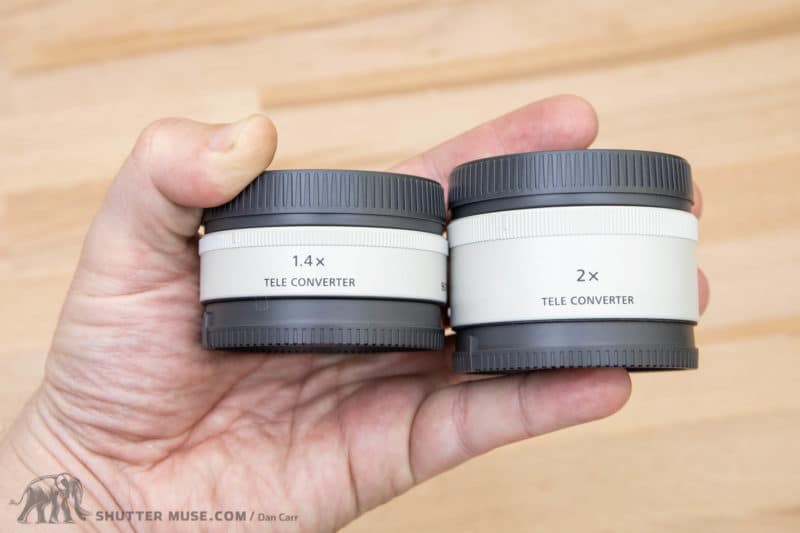
The tertiary reason you might want to use an extender is to become to a focal length that's not available natively in any other lens. If yous used a 600mm lens with a 2x extender, you would have a 1200mm reach, something that's not possible to achieve any other way. Even a 600mm with a 1.4x extender gets you lot to 840mm which is a piffling longer than an 800mm prime (the longest lens being made at the time of writing this article, apart from highly specialist express industry lenses).
So to summarize the advantages, an extender gives you lot:
- A longer focal length (obviously)
- A better focal length/weight ratio
- A better focal length/price ratio (there are some exceptions)
- Double the compositional options
- A way to get to focal lengths that aren't achievable with a prime lens on its own
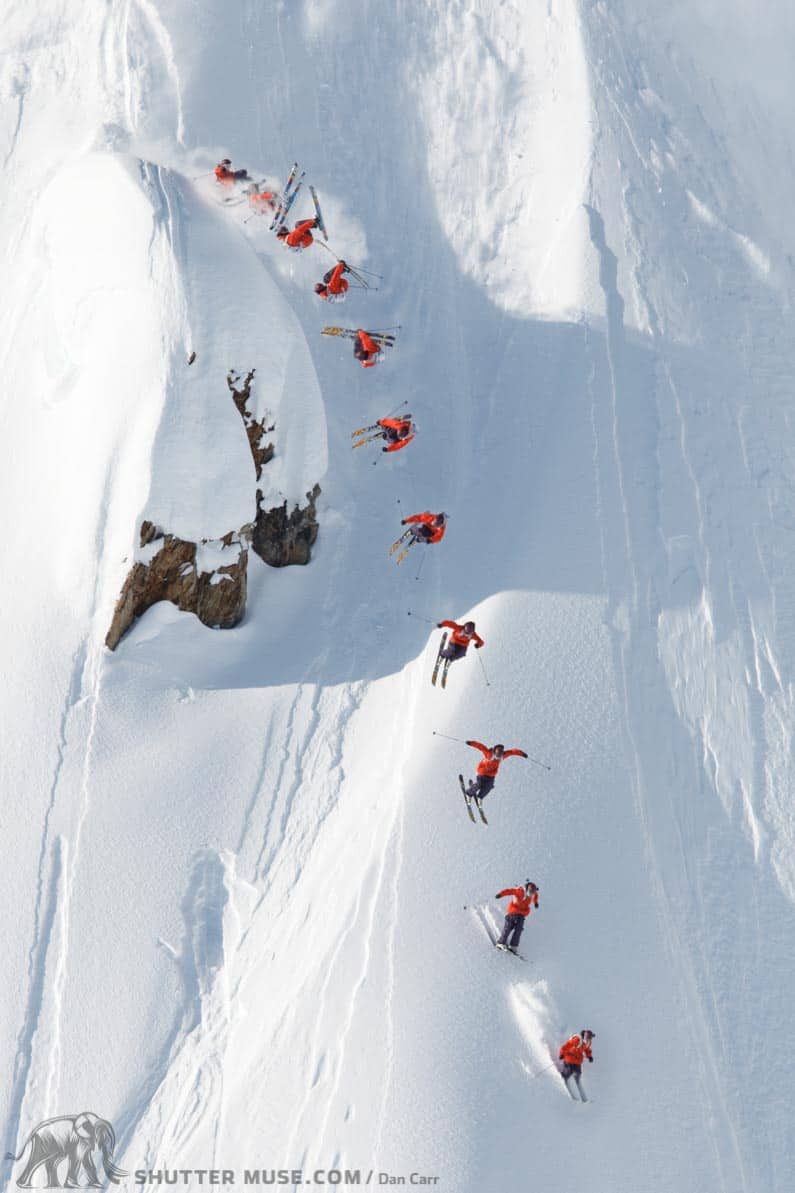
Disadvantages Of Using An Extender
As I mentioned earlier, use of an extender does reduce the maximum aperture of a lens (explanation why farther down). Based on the rules of the exposure triangle this means that you lot might need to shoot with either a slower shutter speed, or a higher ISO if your aperture was inside the lost range before you fastened the extender. In my feel, there's a few common scenarios where this oft comes into play and the first i is shooting sport indoors or under lights in a stadium. In those scenarios, lite is at a existent premium and yous also need a fast shutter speed to stop the sporting activity. A 70-200 f/2.8 is a common lens for basketball shooting, but adding a 1.4x in a dark sports hall can actually cause a struggle for low-cal. The same goes with the venerable 400mm f2.8 on the football pitch at night. NFL games have pretty well lit stadiums just it can be another situation altogether at a college game. These are a couple of times when information technology might be good to avert using the extender due to the 1 stop aperture reduction. On the other manus, if you are shooting a static subject either with a tripod, or at calorie-free levels suitable for easy hand-belongings, then the one stop reduction (with a i.4x) won't brand the slightest fleck of difference to you.
For most people, the biggest disadvantage is the loss in image quality and this is where most of the anti-extender online commentary is centered. Information technology's not totally misplaced, because there is a reduction in quality, merely how much is it?
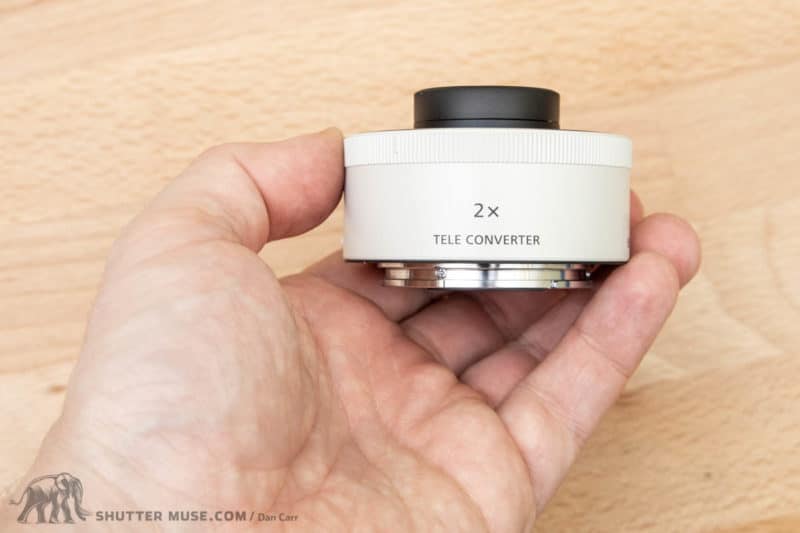
Simplistically speaking, an extender is just similar a magnifying glass that enlarges the cardinal portion of your lens' field of view and projects that onto the photographic camera'south sensor. Since it'south only projecting a smaller central office of the original lens, vignetting is actually reduced when using an extender. Unfortunately, all of the flaws in the original lens become magnified then this means that chromatic aberrations become more apparent, the paradigm becomes softer and there is a reduction in dissimilarity. A 2x extender will therefore always deliver a softer image because it is magnifying the flaws by 2x instead of one.4x. The actual optical quality of the extender itself doesn't have as large a part to play in this whole thing as nigh people would imagine. It's the original lens' optical quality that pays a huge part! If the lens didn't have any flaws and so there would be none to magnify, right?
This explains, for the most role, the split in opinions over the use of extenders. In fact it'southward the very reason my friend was put off using them. When I questioned her farther, she told me she had used one on a seventy-200 zoom, but she'd not tried one on a prime number supertelephoto lens, a lens that is natively MUCH sharper than a zoom lens. Almost people'due south supposition is that the image degradation is entirely due to sub-par optics in the extenders, and they forget to think nearly the quality of the original lens. As the saying goes….. "garbage in, garbage out, magnified past 2"………. Well ok, and so I added that last bit myself, but you become the picture!
The last disadvantage of an extender is that it will cause a reduction in focus speed. With most lenses it's not perceivable in single shot mode without dedicated testing, merely it can be seen in AI Servo tracking accuracy. If you're shooting static objects then it probably won't be an event, but if you are shooting sports or wildlife then it can cause a reduction in your keeper rate. How much, depends a lot on the model of the original lens, the camera model and the extender model. Due to all the possible variations, it's hard for me to land exactly what would or would not be possible to shoot, but you can have a wait at some of my examples to realize that there's notwithstanding a ton of possibilities……. tack sharp cars coming at me at 200mph for example…..
AF systems depend on light for their accurateness and then by reducing the maximum aperture of the lens, we reduce the available light for the AF sensor. In-plough, this means that a 2x extender will take a greater effect on the AF speed. From my experience, for many people the 2x crosses a usability boundary with AF speed reduction and very fast paced sports like motor racing. I'm quite happy with the speed of a proficient lens and a 1.4x extender, but a 2x puts me into an area when I see my keeper rate drop below a threshold that I'm comfortable with. I appreciate this this is a bit of a generalization since we all take our own thresholds but it'south usually AF speed reduction that stops me using a 2x extender rather than an image quality reduction, and that fact alone might surprise a few people.
To summarize the disadvantages, an extender:
- Reduces AF tracking speed and accurateness
- Increases chromatic aberrations
- Decreases lens sharpness
- Decreases paradigm dissimilarity
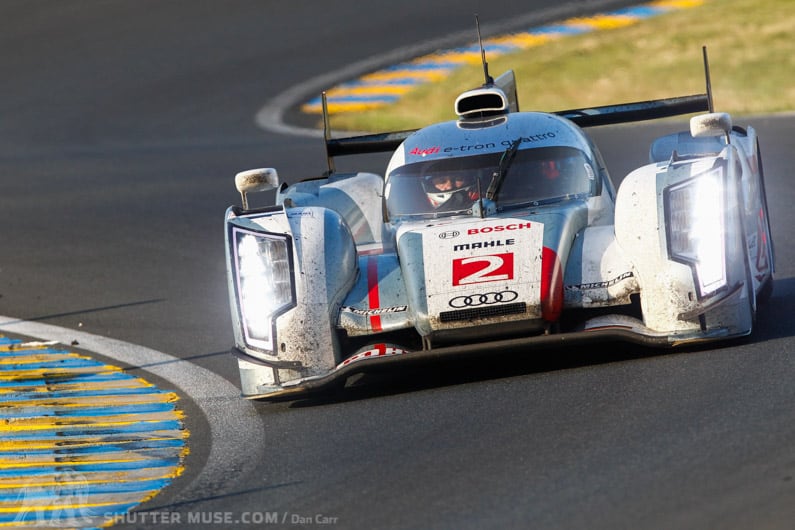
Go Your Technique Down!
It's often underestimated how much your long lens technique needs to improve when you start using extenders, specially with longer telephoto lenses. In that location'southward a radical divergence betwixt getting a precipitous epitome with a 300mm and a 600mm, if y'all've just added a 2x extender for instance. I believe this is some other reason why extenders can accept a scrap of a bad reputation, so information technology's worth paying attending to this.
The generally accepted starting point for shutter speed selection for a abrupt paradigm, is i/focal length. That means if you add together a 2x extender, you lot'll want to double your shutter speed. Long lens technique is a whole article for some other 24-hour interval, merely go along in mind that you'll want an elevated shutter speed or potentially a monopod or tripod to combat shake from handholding.
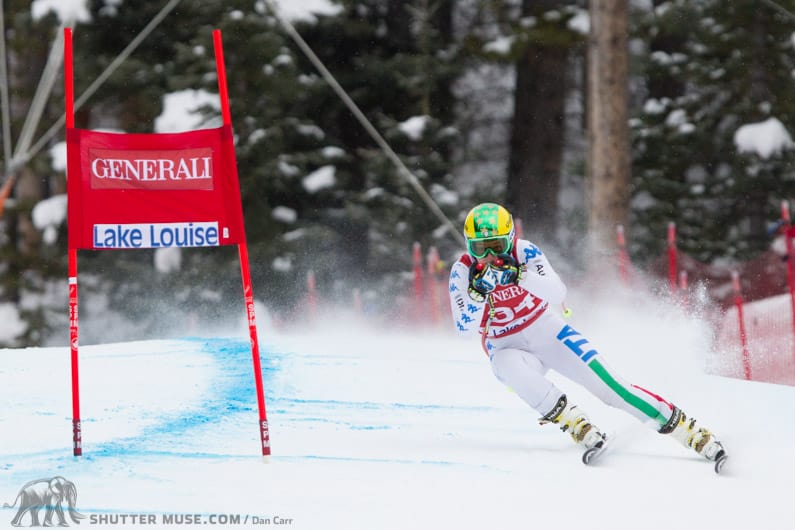
Common Lens And Extender Pairings
This tabular array gives you the mutual bachelor options but before buying an extender you should ever consult the manufacturers specifications to verify your intended combination will piece of work. With regards to most tilt-shift lenses, the manufacturers tend not to specify them as 'officially' compatible because correct aperture values are non passed to the camera, but they should work optically with no trouble. There'due south also a few lenses out there for which the third-political party Kenko extenders (1.4x, 2x) are able to work, where official ones do not. Canon's 100mm f/2.8 50 IS Macro for example.
A couple of spaces in the tabular array take the value Due north/A for the Nikon simply 1.7x extender where Nikon does not make a lens of that focal length.
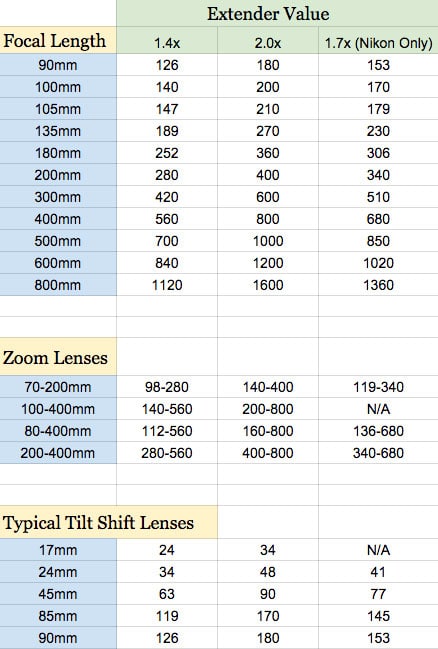
Extender Usage Tips For Maximising Image Quality
There's a few things that tin can be washed in order to maximise the paradigm quality you lot get from a lens/extender combination. Essentially we just need to follow the steps that we normally would when thinking near maximising paradigm quality from a lens. The sharper we can get that original prototype, the less flaws will be magnified. The principal thing is that nosotros desire to stop the lens down to increase sharpness and reduce chromatic abnormality. Whenever I use an extender, I ever attempt and cease down the aperture at least ane stop from where I probably would have had information technology without the extender. The modify in depth of field that this causes, is more often than not cancelled out by the focal length extension anyhow so there'south usually little to no difference in the overall look of the paradigm, apart from the fact that y'all are zoomed in further of course. Since I shoot a lot of sports and wild animals where I demand to maintain a fast shutter speed, I commonly have to increment my ISO to compensate for the smaller aperture that I demand to cease down to.
Since contrast is reduced, you too want to avoid using extenders in apartment, depression-contrast light. If you are able to reposition yourself and you lot're struggling with the contrast, move until the sun is further off to one side where it will create more dissimilarity.
In terms of AF speed and accuracy information technology all comes downward to light levels. Attempt to avert using extenders in very depression light situations, especially the 2X ones. With wildlife photography it'southward proficient to take this into account because much of the action can be at the very outset or stop of the mean solar day when low-cal levels are very low indeed. If your plan is to always rely on using an extender then you might want to re-think it because in those low-lite moments, the AF speed volition be more profoundly affected. This is one of the big reasons that I always tell people to buy a lens that suits their shooting without an extender, and use the addition of an extender for 'bonus' shots. I'd never recommend buying a lens with the sole intention of e'er having an extender mounted to it.

Why 1.4x and 2x?
Whilst researching this article I realized all of a sudden that I knew why extenders are typically presented in i.4x and 2x formats. Information technology hadn't really occurred to me before but all of a sudden information technology was obvious! This does probably fall beyond the bounds of interest to some of you but I'm including it because it interested me to know the answer so there must be a few folks out there who'd also like to know.
F-stop is defined every bit focal length/diameter and it's for this reason that the maximum aperture is affected when nosotros use an extender, it'south got admittedly nothing to do with less calorie-free existence passed through the extenders. If yous double the focal length in that equation, with the diameter remaining the same, you tin see that the f-stop will be affected. In my article, Understanding Aperture, we talked about the progression of f-stops being in multiples of 1.iv (actually the square root of two, but close enough). Each increase in f-terminate is one.4x the previous 1 (2.8, 4, 5.vi, 8, 11 etc.). The reason that 1.4x is chosen for the extender then is that it'south this multiplication of focal length in that equation that gives an exact i-cease difference in maximum aperture! I'd e'er assumed that 1.4x was an capricious number that someone has chose at some point, but at present I tin can see that it was actually chosen because in that equation, multiply the focal length by 1.4 changes the f-terminate by i end. Multiplying the focal length by 2x changes the f-stop by 2 stops considering 1.four*1.4 is two! Information technology's that aforementioned progression again. The powers that be could accept chosen any values for the the extenders, but by using i.4x and 2x, they evangelize a one-stop and two-end reduction in discontinuity which is simply a prissy easy mode to deal with it! That'due south really all it is!
Stacking Extenders
Using more than i extender at the same fourth dimension is generally non accepted to provide acceptable image quality, but in one case again information technology depends somewhat on your intended use for the images. With first-class long lens technique, I believe it's certainly possible to reach what I would telephone call 'decent' quality images of static subjects from a pair of stacked 1.4x extenders. Notation the use of the word 'static' though, since AF speed takes a large hit when y'all effort this.

Teleconverters vs Cropping
Tin can you simply crop in on your image instead of using an extender? Well…. a elementary ingather would have the same effect, upward to a signal. Without extending the lens, you aren't getting the added pinch and stronger out-of-focus groundwork that comes from telephoto images though. Less noticeable if you are thinking of using a seventy-200 rather than a big tele prime though. Some other much bigger problem though is that y'all tin't accurately frame an image in your viewfinder if you always plan to crop it afterwards. Y'all're essentially removing a huge part of the artistic process and I can't wrap my head around why anyone would want to do that. It'south also a pain in the ass to accept to crop hundreds of images and the reality is that you probably wouldn't bother doing them all.
Now, from an image quality standpoint, what people desire to know is whether the degradation acquired by an extender, is less that that caused past cropping and and so re-enlarging that crop to the original pixel dimension. I'll hold my manus up says I've never performed a direct side-by-side…… but only because I retrieve it's not worth the bother. There's no way that the extender is going to exist a worse pick than a crop and enlargement. Photoshop, and programs like OnOne Perfect Resize or Topaz Gigapixel AI do a great job, simply it's e'er noticeable. Oftentimes when I look at my extender images I tin can't even tell if I used ane or not when it's a good lens.
Reader Question:
Is there a quality difference between using an extender or an aps-c sensor with a given lens to extend your telephoto capability (assuming the same ratio)?
This question came in via my personal Facebook page. The answer is yes, there is definitely an optical quality divergence because the utilise of a cropped sensor doesn't effect in whatsoever of the prototype degradations nosotros discussed earlier. None of the lenses flaws are magnified in any way, all that's happening with a crop sensor is that a smaller expanse of the lens is being used to capture the image, the central office. This is if we just consider optics though. It get'southward a little trickier when y'all consider that full frame sensors are inherently higher quality than APS-C ones, and whilst that has nada to practise with lenses and extenders, it should be taken into account.
Conclusions
To totally ignore the possibilities that an extender tin give you would exist a error. I promise that some of the sample images on this page can reinforce this notion, although spider web resolutions tin can't be an ultimate judging indicate, you'll just take to trust me that the pixel peeping results are very good and that I've satisfied clients all over the world with images created with an extender. You tin't just slap one on and wait to go on shooting the way you were without information technology though. A few simple adjustments in discontinuity and shutter speed will go a long way to maintaining the quality of your images.
Where To Buy
Every bit usual, it's greatly appreciated if you use our links to make your purchases. We may make a small commission from this and it helps to cover the high costs of running a pop website.
Pivot This Mail service
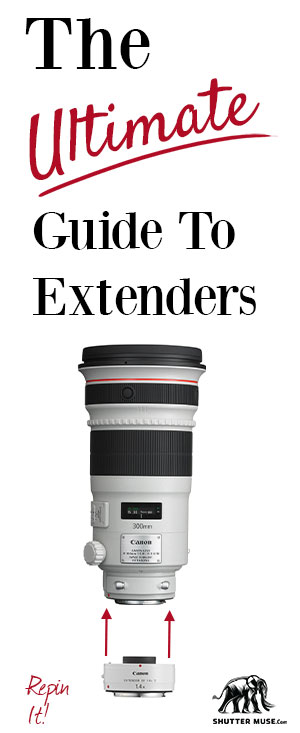

Source: https://shuttermuse.com/ultimate-guide-to-extenders-teleconverters/
Posted by: metcalfparturly.blogspot.com

0 Response to "Can You Use A Doubler Lens On A Dslr Camera"
Post a Comment